

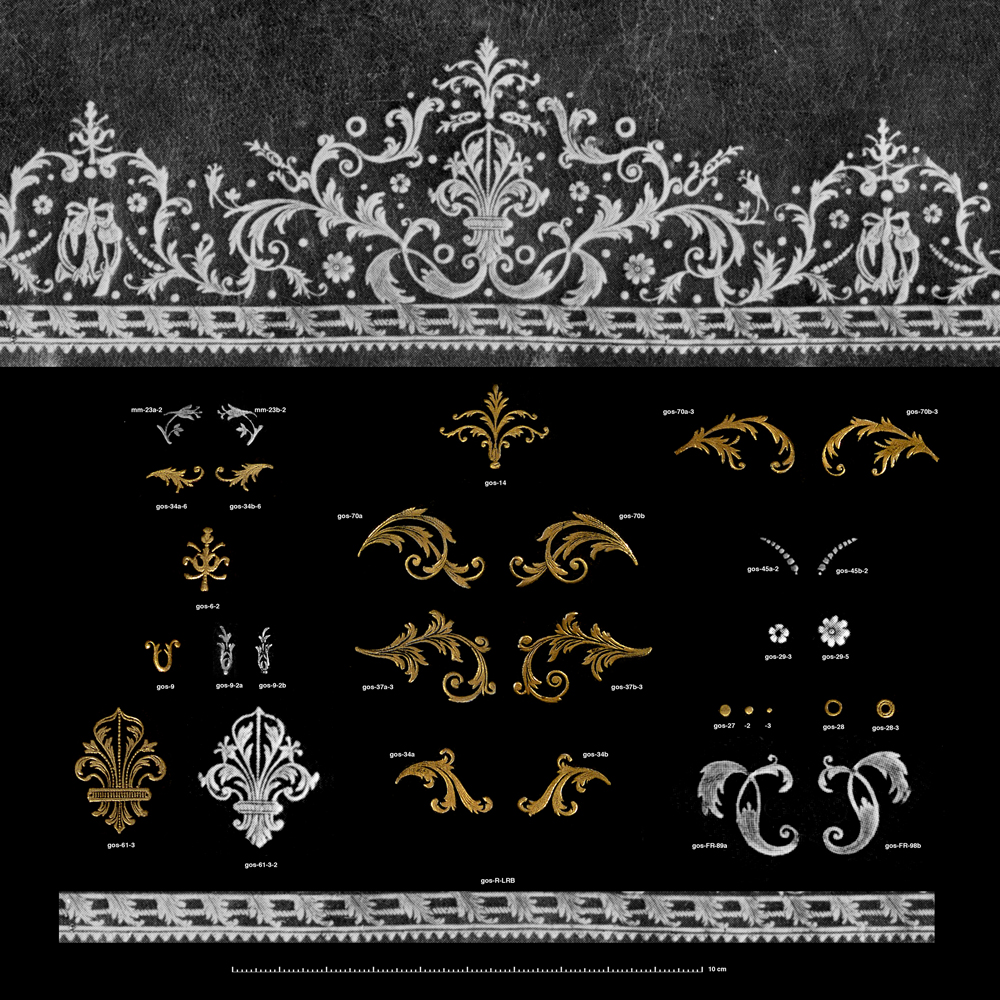
| In Comparative Diagram 1, we see a detail taken from the 1783 Armorial binding shown on page 5. We assume that this is a 1783 Gosselin binding due to the auction information stating that the most recent armories shown within it, date to 1783, whereas in the case of the Armorial shown on the previous page, the most recent armorial shields date to 1772. Now my first question was this unusual border roulette, why? because a nearly identical roulette was used by Delorme in the early part of his career, I show this on a previous page (click here to see it) and more impressively it is found on Louis XV's famous Livre Rouge (click here to see it). It would seem a bit odd or unusual that Delorme, who was perhaps serving his apprentiship with Dubuisson could be working on such an important binding, One that is thought to have been made in 1760, perhaps Dubuisson did not have the strength or time to do it and was forced to let Delorme do it. What we know for sure is that Dubuisson decorated the first Livre Rouge for Louis XV around 1750 and another was ordered around 1760. It may turn out that the first Livre Rouge was ordered by Louis XV from Padeloup, and Padeloup passed the order to Dubuisson. We can clearly see that the first binding was definitely by Dubuisson, however a smattering of Delorme's tools showing up on the second seems to suggest that he decorated this binding. In any case, by 1763, Delorme was making good use of this roulette, particularly on books that were used for accounting. Then two decades later we find Gosselin working with a nearly identical tool. The first thing that comes to my mind is that there could be a mistake (typo) concerning this date of 1783. So we need to have a closer look at Gosselin's decoration of this Armorial, which explains to a certain extent Comparative Diagram 1. In Comparative Diagram 2 and 3, we see the close similarity in these roulettes. Barber never recorded this roulette, so we are left to our own devices to find a catalogue number for this tool. It looks like a fence with leafs for pickets on the rails (LRB) |

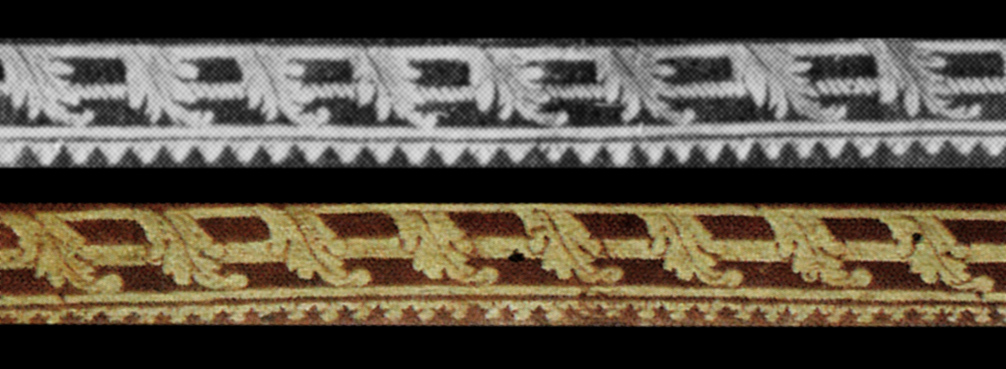
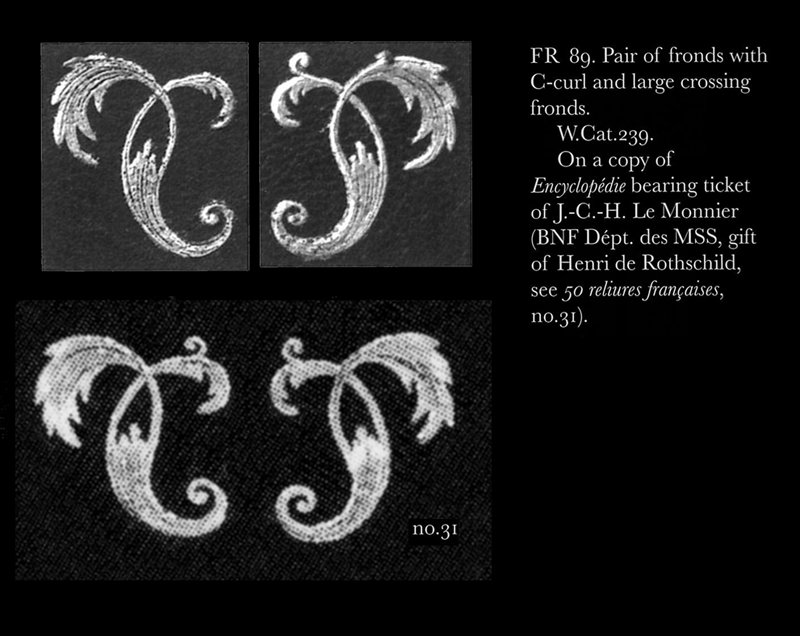
| In Comparative Diagram 4, I show Barbers FR 89 compared with the no. 31 example cited in the FR 89 notes. The Gosselin imprints of this type, that are also shown in Comparative Diagram 1, are not found in any of my previous catalogues, this means that in the more than 10 years of researching Gosselin tools I did not encounter this pair... and suggests that these tools must not be early Gosselin tools or I would have encountered them somewhere. This is an indication that this binding may be a later production and that it could well be from 1783. Now I have to mention the fact that Barber has omitted a detail in his FR 89 reproduction, the uppermost curl of the model on the right, further to this, he has confused his FR 89 with Gosselins tools of this type. Barber sites the no.31 Rothschild example, that we know is on a binding decorated by Gosselin, and thus has to be the same as the Gosselin example shown in Comparative Diagram 1, these imprints are not the same as those shown by Barber as FR 89. Barber states that the example that he has illustrated is from W.Cat. 239. therefore we can clear up this issue by an examination of that binding. |
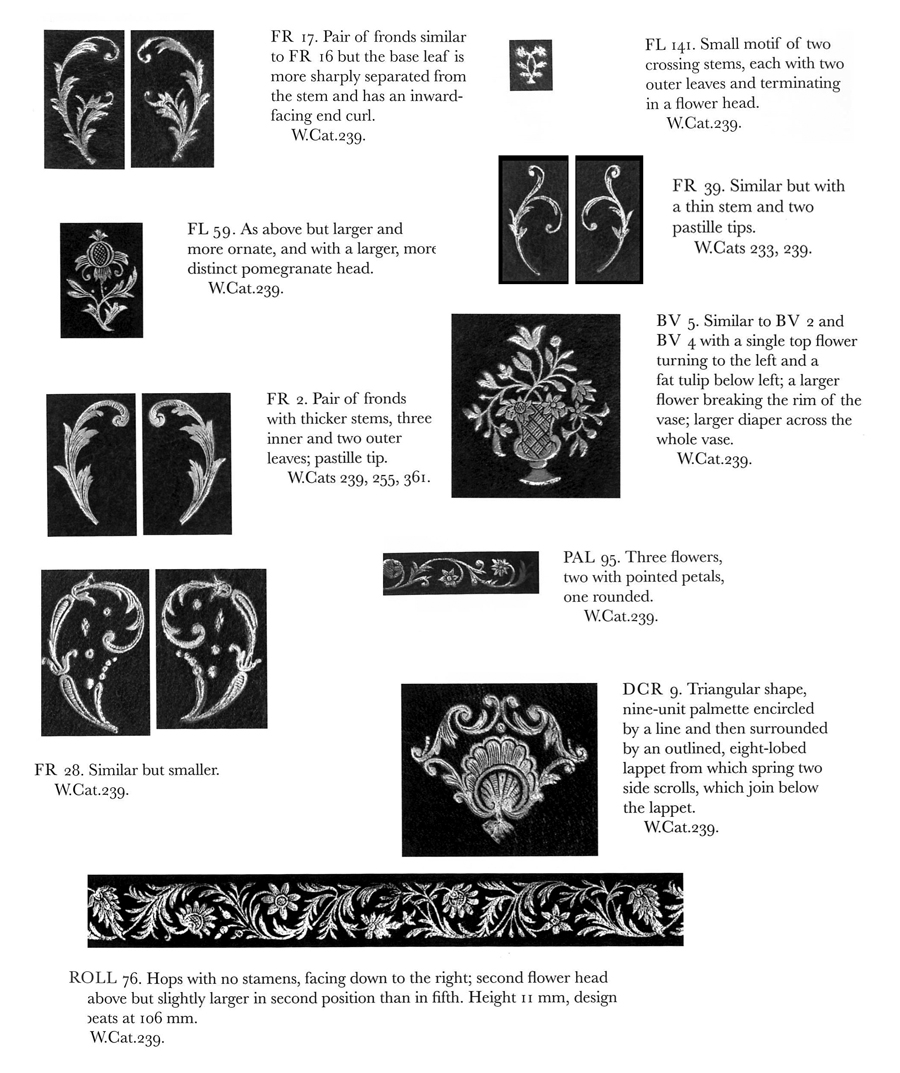
| In Comparative Diagram 5, I have assembled a collection of Barber's W.Cat.239 tools, unfortunately I do not have a photo of this binding yet, however this collection of tools suggests that these are Douceur tools and or post Douceur workshop tools or Plumet tools but they are definitely not Gosselin tools. This explains why Barber's illustrated FR 89 is slightly different compared with the Gosselin imprints. Barber has stated that the no.31 Rothschild imprints of this type are also a FR 89 pair, however this turns out to be incorrect. |
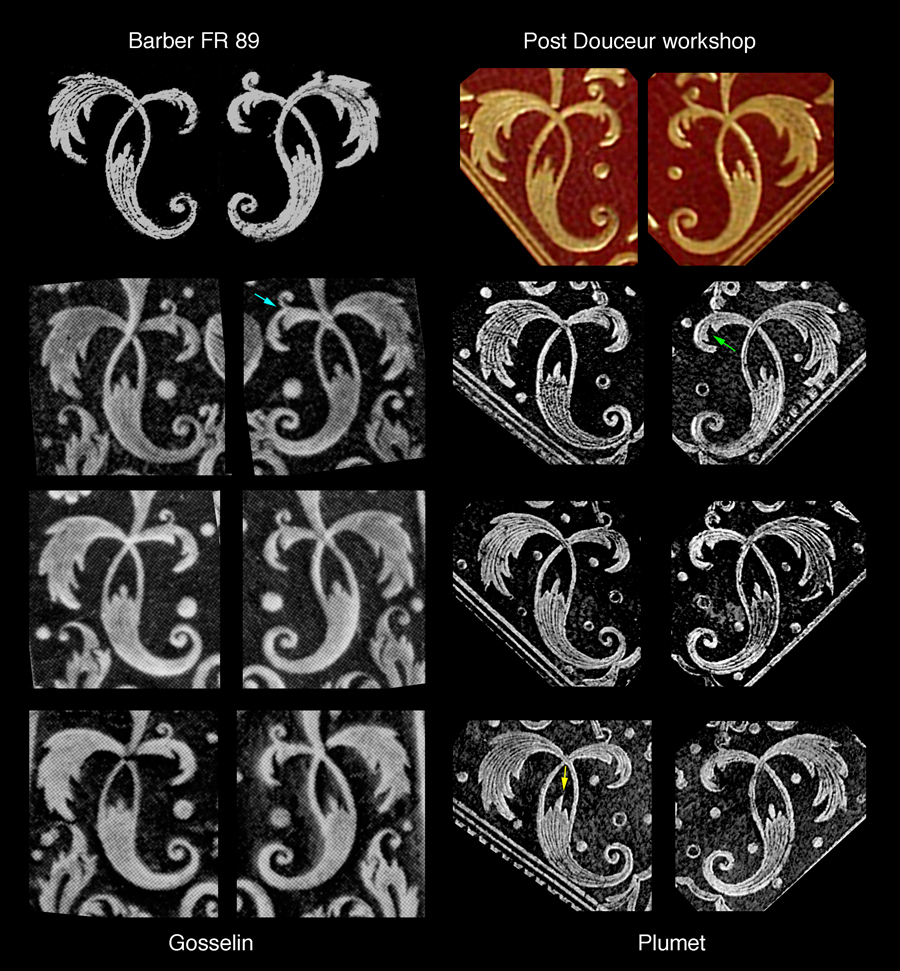
| In Comparative Diagram 6 we see six Gosselin examples from the 1783 Armorial binding and 6 Plumet examples from a binding that I have documented previously (click here to see it). I have added the color example that I found in my Post Douceur workshop pages (click here to see this). Here we have found Barber's illustrated FR 89 imprints, and now with the various examples to compare these tools, we can easily see that these colored imprints derive from the actual FR 89 tool. |
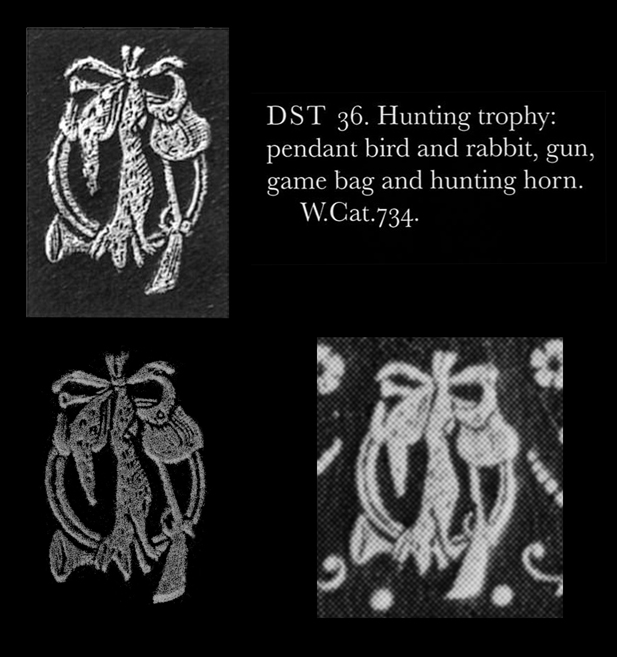
| In Comparative Diagram 7 we look at an imprint that I did not include in Comparative Diagram 1, I see this imprint in my old MM/Gosselin imprint catalogue but never gave it a number, now I have found this very same imprint in Barber's catalogue DST 36. This is a fantastic armorial composition that Barber has reproduced well, and his description opens your eyes to all that is happening in this interesting collage of armorial motifs. I show in Comparative Diagram 7 a poor resolution example from the 1783 Armorial and a much better excample from a binding found in Edouard Rahir's 1910 catalogue Livres dans de riches reliures des seizieme, dix-septieme, dix-huitieme et dix- neuvieme siecle, Paris, D. Morgand, 1910. No. 289. I show it below in Comparative Diagram 8. |
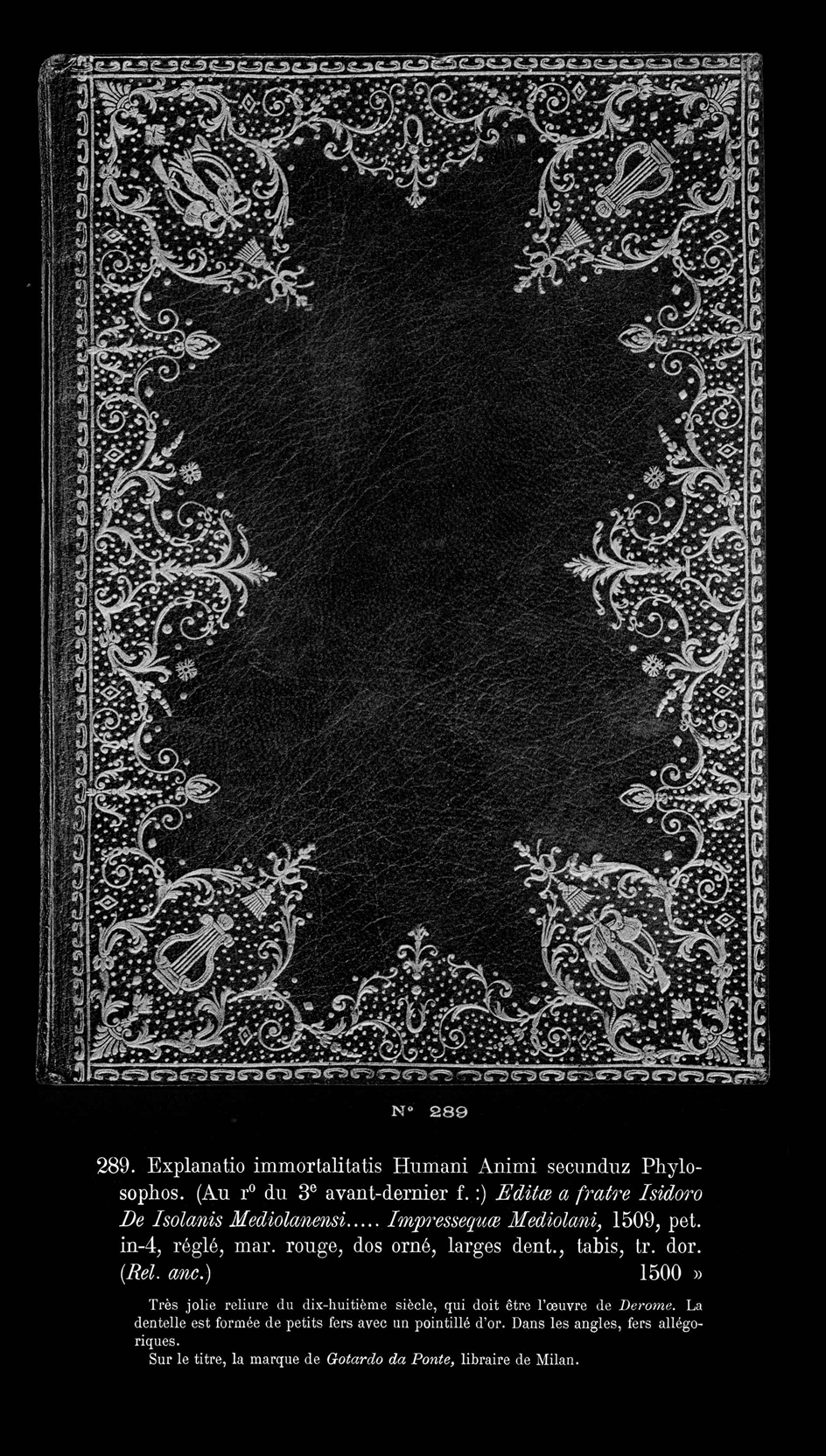
| In Comparative Diagram 8, we see another Gosselin binding where he has incorporated the DST 36 imprint. I want to also point out that in this binding Gosselin has employed an ancient decorating technique, the application of many small gold dots to create a sort of background filler in certain areas. This decorative idea became popular in the middle of the 16th century, and can be seen in the so called Maioli bindings (see the British Library examples c19d12, davis336, davis379) |
|
click here to return to the HOME page. click here to see an INDEX of the 2017 pages. see below links to previous work |
| Even experts are sometimes wrong, before you spend thousands on a book, please do your own research! Just because I say a certain binding can be attributed to le Maitre isn't any kind of guarantee, don't take my word for it, go a step further and get your own proof. In these pages I have provided you with a way of doing just that. |
| Virtual Bookings, created by L. A. Miller | return to the Home page of VIRTUAL BOOKBINDINGS |